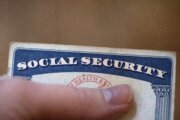When it comes to protecting your credit, one simple move can go a long way.
It’s a move that most of us can make. It’s easy to do and should last for a long time.
Of course, this move won’t bulletproof your credit. It won’t protect you from an unexpected job loss or a medical emergency that cleans out your savings and renders you unable to pay your bills. It won’t keep you from applying for way too many credit cards and maxing them out. It won’t keep someone from fraudulently opening an account in your name and racking up massive amounts of debt.
The truth, however, is that while many Americans’ credit mistakes are due to unexpected circumstances, others aren’t. Many are results of forgetfulness, poor organizational skills or lack of attention to detail. It’s understandable, though. Our to-do lists are a mile long, and we’re all incredibly busy with our families, jobs and other interests.
[See: 12 Habits to Help You Take Control of Your Credit.]
That is where automatic payments come in.
There is nothing more important to your credit score than making payments on time every time. In fact, 35 percent of your credit score relies on your payment history — your track record for paying on time — making it the single biggest factor in building a great credit score. (The only thing that comes close is your credit utilization, or how much debt you have compared to your available credit. That makes up 30 percent of your score.) Paying a bill more than 30 days late can cause a good credit score to drop by 100 points or more, according to myFICO, the consumer division of FICO. It’s a big deal — but it can be avoided.
Consider this: In the not-too-distant past, most Americans paid their credit card bills by writing a check, stuffing it in an envelope and mailing it in. They did this every month like clockwork, and some still perform that ritual. They did it even though the check could get lost, damaged, stolen or subjected to any other of the myriad problems that came along with snail mail. If something did happen to the check, they often wouldn’t know until the next credit card statement came in the mail and showed that no payment had been received. You could always call the bank and make sure that it had received your payment, but you couldn’t simply look online and have a constant running list of all of the transactions in your account.
Those days are gone. Now banks make it as easy as possible to “set it and forget it” with your credit card payments. After just a one-time setup, your bill can be paid every month (as long as you have enough money in your account to pay the tab).
Here’s what you need to know about automatic payments.
[See: 12 Simple Ways to Raise Your Credit Score.]
1. You can choose how much to pay: Most card issuers give you several options when it comes to how much you pay each month. You can pay the full statement balance. You typically can designate a specific dollar amount to pay each month. (Say you’ve decided that you want to pay $100 per month to the card, regardless of what you owe. You can do that.) You can also pay just the minimum. It’s probably best not to choose that option, however. Otherwise, interest will accrue quickly and your debt will grow faster than you’d imagine.
2. You can choose when to pay: Typically, your card issuer will allow you to choose exactly how many days before your statement’s due date you’d like to pay your bill. Aim for a week to 10 days prior to your due date. Technology is great and fast, but it’s also imperfect. Mistakes can happen. Tech issues can arise. Payments can be delayed. Play it safe and allow your payment plenty of time to reach its virtual destination.
3. You can choose your payment portal: The simplest way to pay your bill would be to set up automatic payments through your credit card issuer’s website. Simply link your checking or other type of account to your credit card issuer’s payment portal, select how much you’d like to pay each month, determine when you’d like to pay and then let the issuer pull the funds from that account each month. You can also arrange payment through the bank with which you have a checking or savings account and have that bank push the funds automatically to your credit card issuer each month. There are also plenty of third-party companies that will help facilitate the payment process.
[See: What to Do If You’ve Fallen (Way) Behind on Your Credit Card Payments.]
4. You should still be flexible: While automatic payments are great, they should not be doing all of your work for you. Let’s say that you have arranged to pay either the minimum amount or another amount that is smaller than the total statement balance each month. If you find yourself with some extra money in a given month and want to put that money toward paying your card debt, you should. Just make a one-time payment through the issuer’s website. Also, if you get a new higher-paying job, or even just a raise, and can afford to pay more each month, be sure to adjust your autopay settings to bump up each month’s payment.
5. Trust but verify: As helpful as automatic payments can be, they aren’t perfect. No technology is. Check each month that bills were paid on time, in the right amount and to the right recipient. It shouldn’t take long or be inconvenient — especially considering that you should be visiting your various banks’ websites at least every few weeks to look for possible signs of fraudulent activity — but it’s important. After all, no one cares as much about your money as you do, so be diligent when managing it. You’ll be glad you were.
More from U.S. News
5 Ways to Give Your Credit Score a Quick Boost
8 Ways to Maximize Your Credit Card Rewards
8 Financial Steps to Take After Paying Off a Debt
The Biggest Credit Mistake That People Make — And How to Avoid It originally appeared on usnews.com







